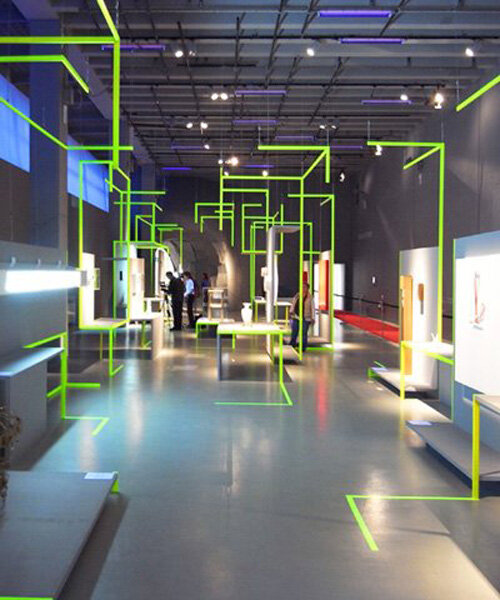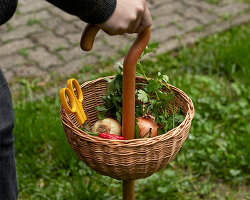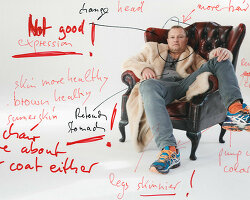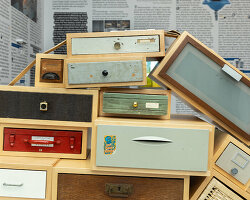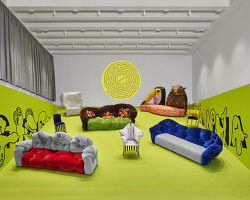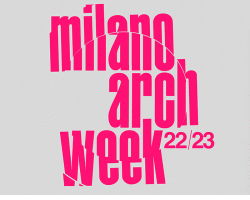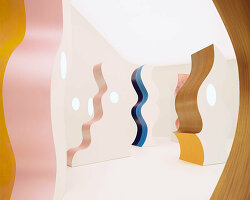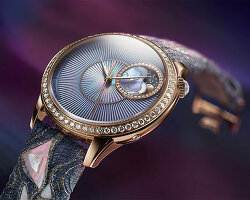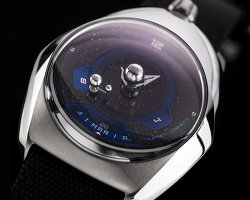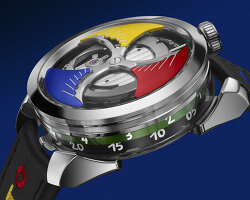o’clock. time design, design time
triennale di milano, italy
until january 8th, 2012
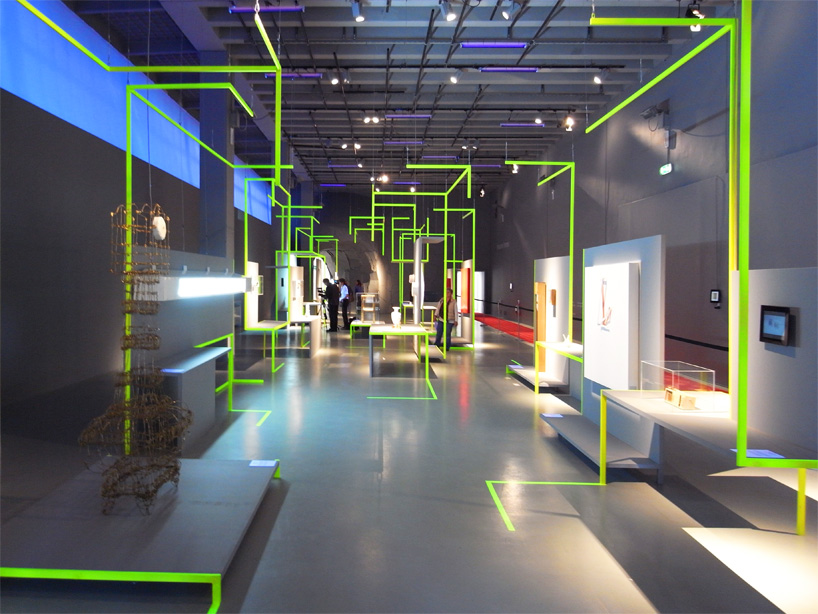
general view of ‘o’clock. time design, design time’ exhibition designed by patricia urquiola (1st section – entrance)
image © designboom
the triennale design museum in milan presents ‘o’clock. time design, design time’, a show which explores the relationship
between time and design. curated by silvana annicchiarico and jan van rossem, with the exhibition layout conceived by
spanish-designer patricia urquiola, the installations, products, art pieces, site-specific works and videos on show created
by international artists and designers, each try to answer such questions as: ‘how can time be measured?’, ‘how can passing time be shown?’
and ‘how can time be experienced?’.
while figurative art, cinema and photography have developed a long, in-depth reflection about time, design has instead often
addressed the subject by merely confining it to the categories of accuracy, measurability and functionality. yet, the relations
between time and design are much more complex and can reveal surprising perspectives, both aesthetically and functionally.
all of the exhibits address topics such as the passing of time, ever-changing time, perishing, sometimes in a humorous manner,
sometimes poetically, sometimes meditatively and sometimes critically. more than 70 timepieces chosen from existing collections,
as well as specially commissioned works for this occasion at the triennale are on show including ‘real time’ clock by maarten baas,
the water clock by kouichi okamoto of kyouei design, ‘self printed designs‘ by oscar diaz, ‘eternity‘ by alicia eggert & mike fleming,
the ‘sasa clock‘ by thorunn arnadottir and ‘beautiful sunflower panerai painting’ by damien hirst. in this scenario,
where time is dulled into the present, the exhibition displays multiple perspectives of time, its incessant bustle, and its passing by.
‘(…) time expressed by the clock with hands was once a beautiful reproduction of the natural time
calculated by the sun in the sky. on the contrary, today one of the characteristics of the digital clock is to
communicate nothing at all of the universe. perhaps they alert us to the fact that the essence of a timepiece no longer
consists in displaying the course of natural time, but only of artificial time, artifact time.
o’clock thinks deeply about this transformation and the relationship between time and design.
but this is not an exhibition with a historical approach. it does not seek to document the history of timekeeping diachronically,
nor the relationship that the masters of design have had, over time, with instruments, from calendars to clocks,
used for measuring time.
o’clock is meant to act as a synchronic survey of the possible relations that some contemporary objects
or designs – beginning from about the zero of the new millennium – have with time and the problems
connected with it. thus o’clock appears not so much under aegis of kronos as that of kairos.
it does not present a logical or chronological sequence of objects, but an aggregate set of exhibits
by the type of perception it triggers, emotions it inflames, thoughts it sparks.
hoping that this can also trigger the occurrence of something in the visitor. (…)
o’clock seeks to give some answers to these questions, by way of enigmatic objects, aesthetic artifacts,
ironic projects, playful, philosophical, mechanical, instinctive, existential observations or provocations on
the notion of fleetingness.’ – silvana annicchiarico and jan van rossem
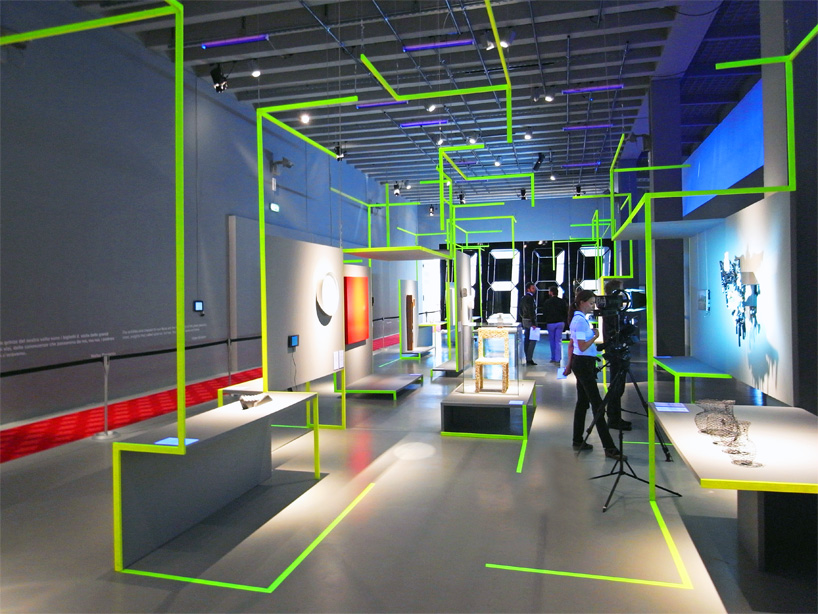
exhibition view
image © designboom
‘the whole exhibition is woven out of choices: the choice not to follow a chronological layout in the presentation
of the exhibits, the choice not to display explicit time-keeping devices or objects closely bound up with this function.
even the location of the exhibition begins with a choice.
the visitor is immediately offered two possibilities, two distinct modes of use: a ‘normal’ entrance and a ‘fast track’.
those who choose the ‘fast track’, also out of curiosity, will not see the exhibition in its entirety, but a rapid ‘summary’
of it. but it is always possible to walk out of it with self-parody.
the initial choice is also a metaphor for how people generally choose to use their time and the value they attach to it.
I decided to articulate the layout as thre sections. the first deals with the measurement of time. it creates an interplay
between perceptions and visions into a dark space enlivened by artificial lights, where the floor and walls become one and
the objects are suspended on broken grids.
the second section deals with objects that traverse time and the theme of time travel. the relation established between
the works and natural light is important. the light changes with the different times of day and the seasons, creating an
effect of ‘temporariness’.
the third section is devoted to the representation of time through a series of limbos which serve as the settings for
small scenes, small theatres, in which the objects interact with each other. limbos annul the spatial coordinates while
the lighting again becomes artificial.
the challenge was to construct a metaphorical enactment of an ancestral, complex and fascinating theme,
while seeking to avoid the commonplace and the didactic.‘ – patricia urquiola
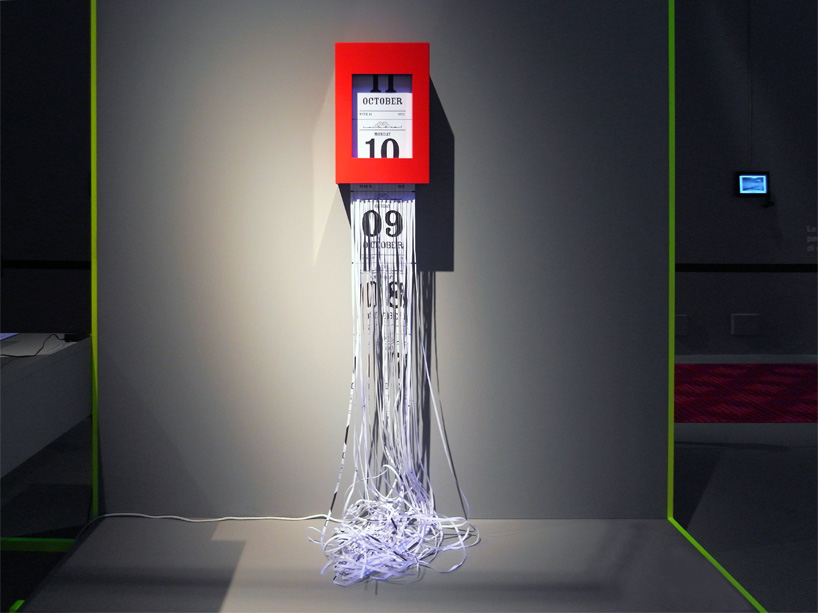
‘chrono shredder’ by susanna hertrich, 2011
image © designboom
with ‘chrono shredder’ by french designer susanna hertrich each day that goes by is placed in a paper shredder,
cutting them up into big pieces, destroyed, eliminated.
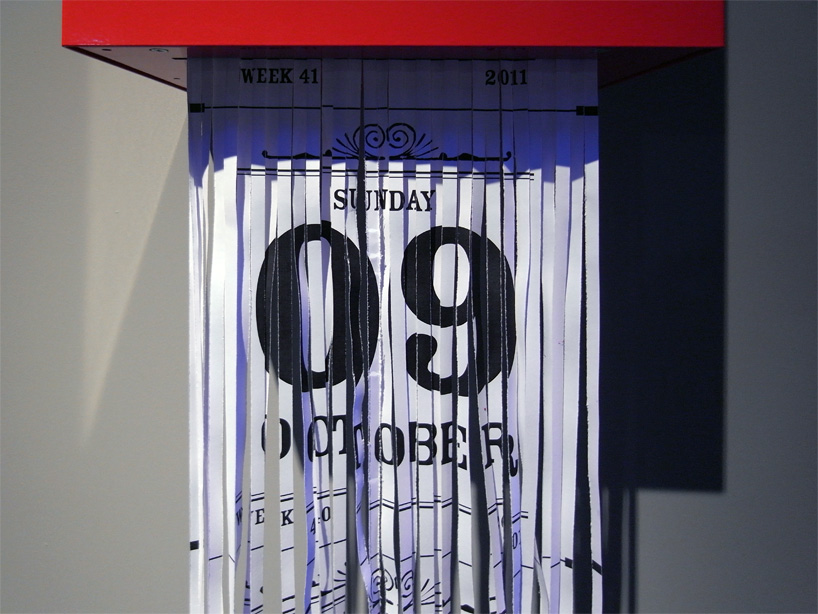
close-up of ‘chrono shredder’
image © designboom
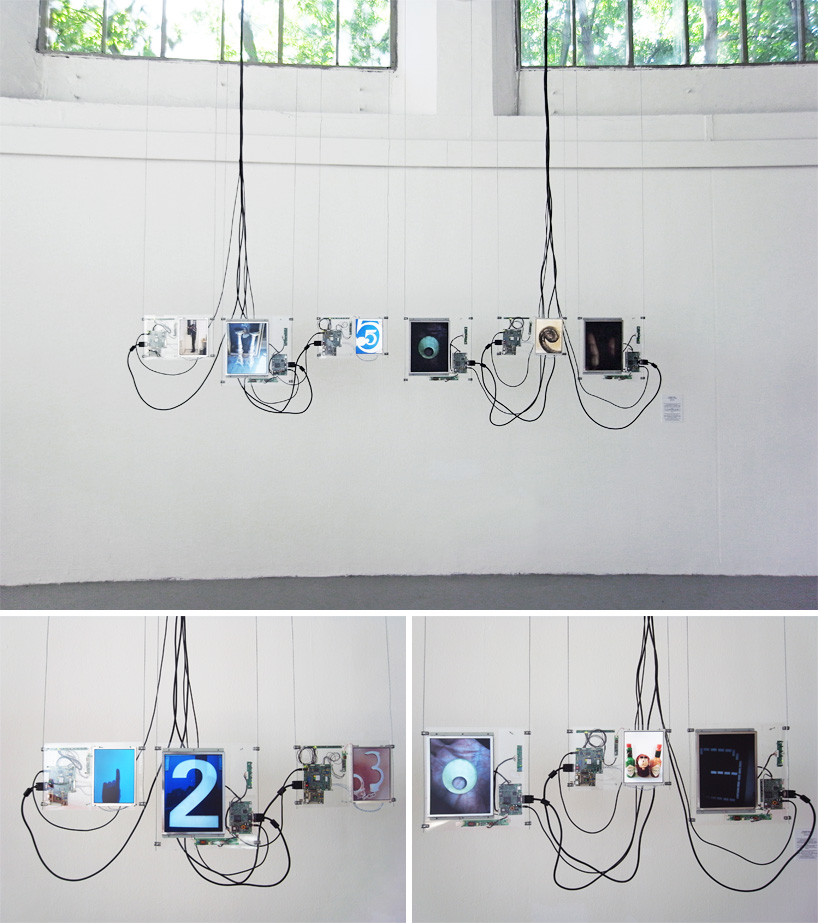
‘exquisite clock’ by joao wilbert for fabrica, 2010
images © designboom
the ‘exquisite clock’ by brazilian designer joao wilbert uses photos of numbers found in everyday life and puts them together in a physical clock,
a website and a mobile application. the photos are uploaded by people from all over the world and are instantly displayed around
the globe, including the clock shown in this exhibition. you can add your own picture – download the iPhone app here.
see designboom’s previous article on the ‘exquisite clock’ here.
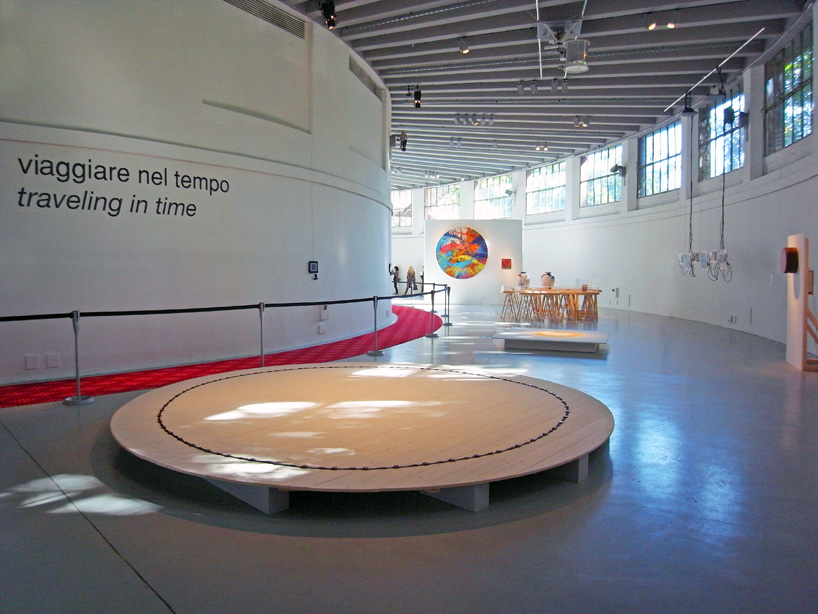
exhibition view
front: ’60 seconds’ by ignacio uriate, 2005
image © designboom
’60 seconds’ by german designer ignacio uriate is an installation made of sixty plastic wristwatches tied together so as to form a circle,
each watch were set so that it is a second behind the one preceding it. at the same time it is possible to visualize all the seconds in a minute.
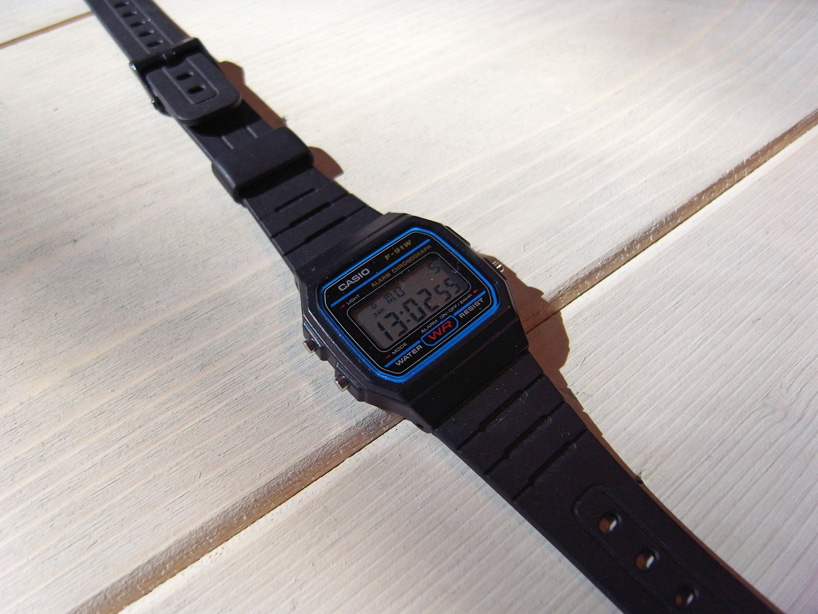
close-up ’60 seconds’ by ignacio uriate
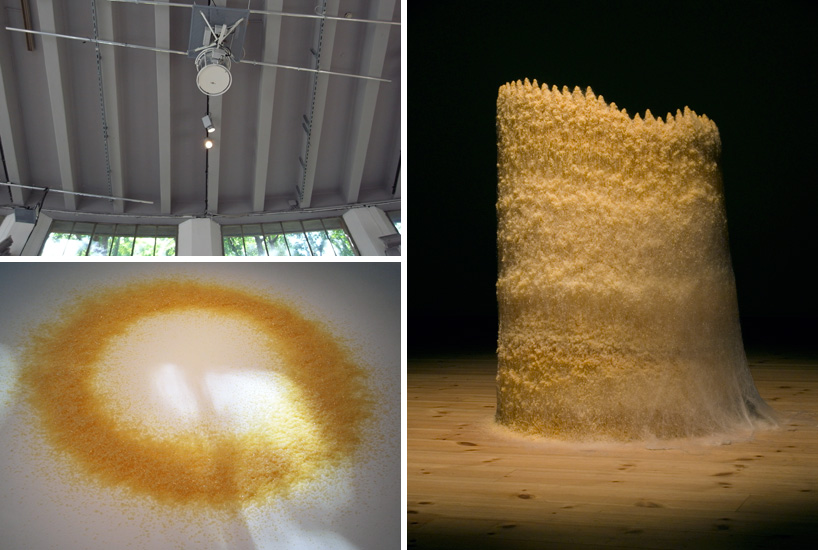
‘0.5g min’ evolving sculpture by albin karlsson, 2007
images © designboom
the sculpture ‘0,5g min’ by swedish designer albin karlsson takes form during three months, slowly building up its form over time.
‘0.5g min’ evolving sculpture
video courtesy by albin karlsson
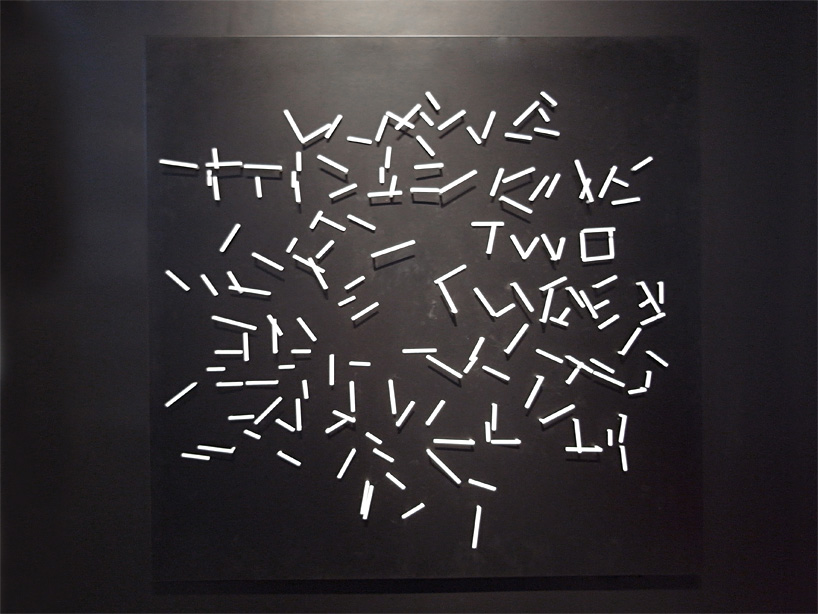
‘clock’ by christiaan postma
image © designboom
christiaan postma explains that the starting point with his project ‘the clock’ was a personal study about form & time.
the dutch designer puts together more than 150 individual clockworks and arranges them work together to become one clock.
he shows the progress of time by letting the numbers be written in words by the clockhands. reading clockwise,
the time being is visible through a word and readable by the completeness of the word, 12 words from ‘one’ to ‘twelve’.
the size of the clock is 1,4 by 1,4 meter.
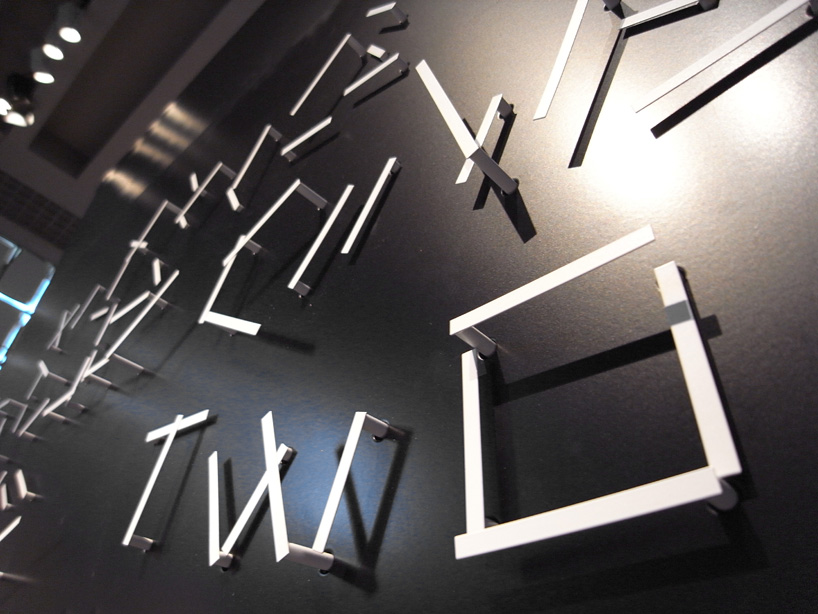
detail of ‘clock’ by christiaan postma
image © designboom
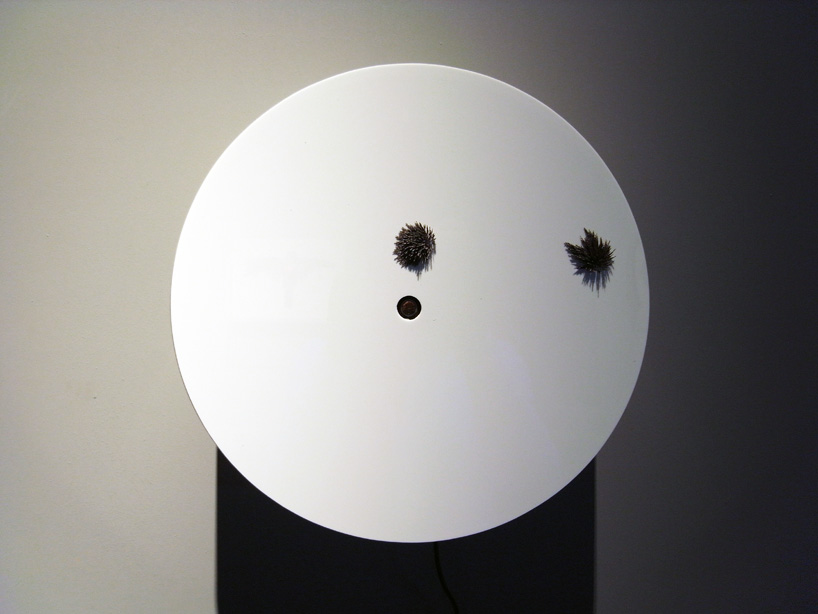
‘revo’ by leonardo fortino and andrea bartolucci
spigoli vivi lab, 2011
image © designboom
the basic idea of the ‘revo’ clock by italian designers leonardo fortino and andrea bartolucci of spigoli vivi lab,
is that time is the constituent element of the relationship between space and material: in the shifting of any body in space,
in fact, the passing of time is implicit.
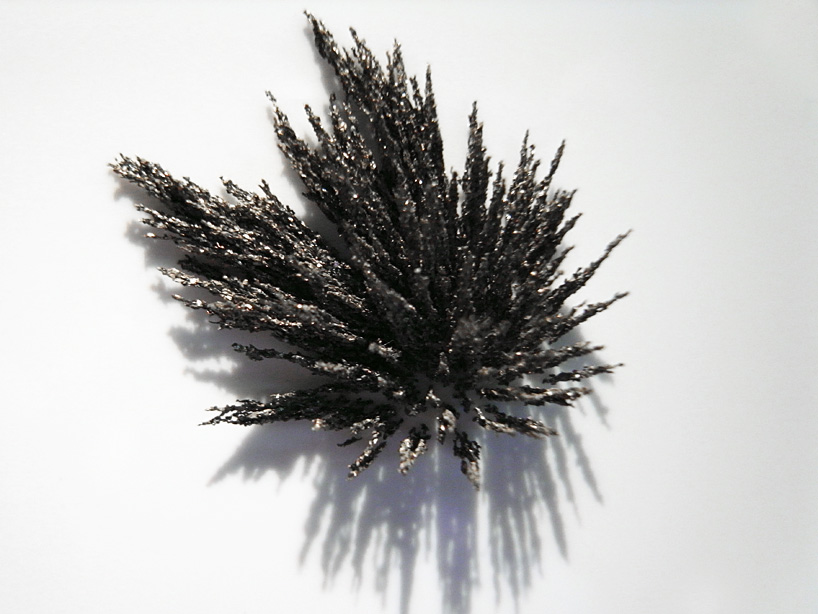
close-up of ‘revo’ by leonardo fortino and andrea bartolucci
image © designboom
video © spigoli vivi lab
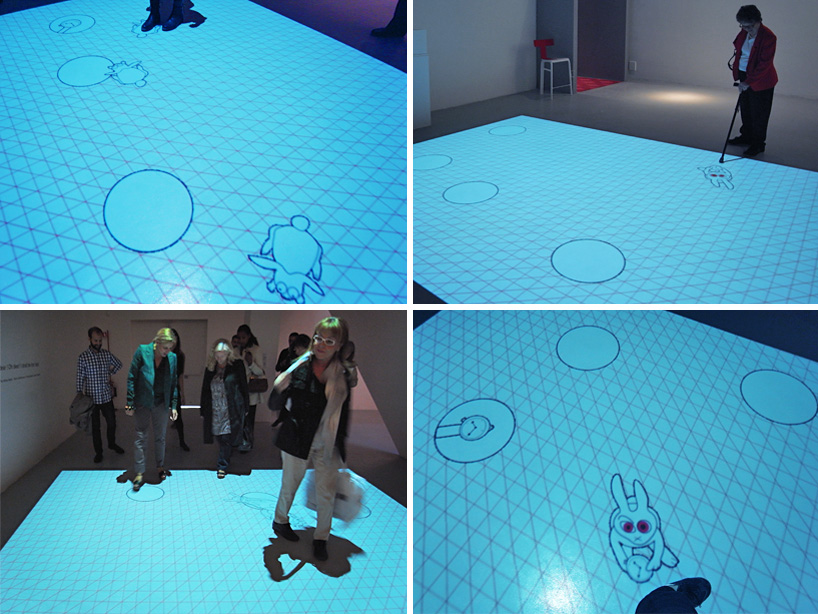
‘hurry up! hurry up! by patricia urquiola & DEIS bologna (federico tombari, samuele salti, alessandro franchi)
site specific, 2011
images © designboom
‘freely inspired by alice’s (in wonderland) rabbit, this installation takes the visitor aback by allowing him or her to interact
with the character. anyone entering the area that has been prepared is literally chased after by the white
rabbit that, just like in lewis carroll’s famous book, is always fretting about being late. never content, as
soon as the visitor stops, the rabbit pulls out a pocket watch with a menacing look, making the visitor anxious.
in this case as well, an ironic and playful attempt is made to visualize contemporary man’s obsession with time,
his fear of losing it, wasting it and not being able to handle it.
the rabbit thus becomes a sort of ‘memento’, a magical and bizarre figure accompanying the visitor to reflect on
his or her own ‘times’.
all of this has been made possible by exploiting the techniques of artificial intelligence. by means of a three-dimensional
data sensor and an algorithm specifically devised for this installation, the visual information relating to the characteristics
of the environment are captured by the sensor and are used to ‘follow’ the spectators with a virtual rabbit that starts
interacting with them.‘ – patricia urquiola
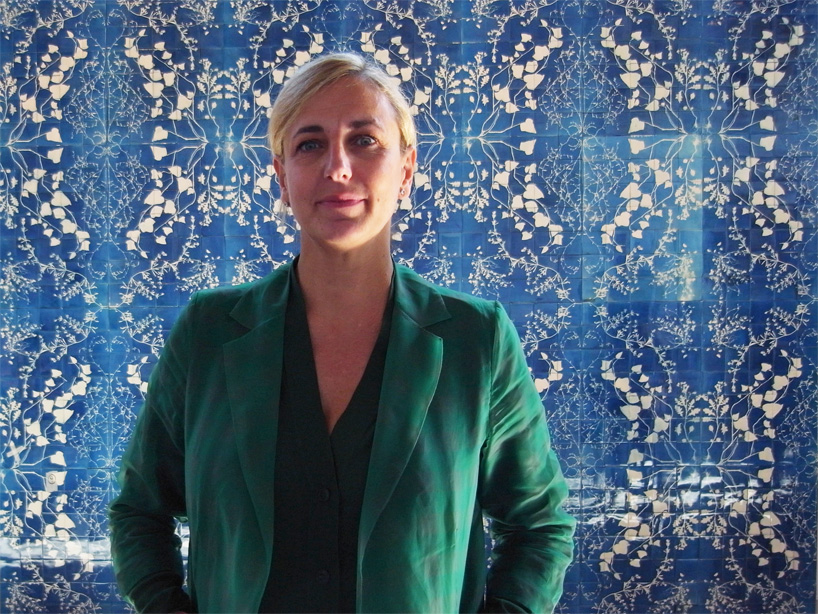
patricia urquiola
background: ‘blueware’ tiles by studio glithero
portrait © designboom
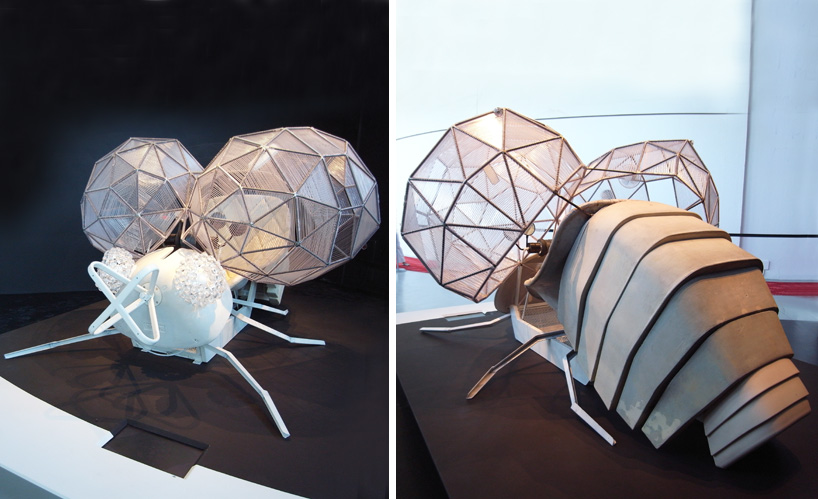
‘the bug – time machine’ by patricia urquiola for moroso
site-specific, 2011
images © designboom
‘time has always been an obsession for humanity in that it is the least controllable and modifiable element.
the strongest limit to be overcome and on which technology and progress can intervene least of all. dealing
with our being limited, with a deadline, which we can try to extend, but not avoid. dealing with eternity and
the impossibility of experiencing it. the curiosity of being able to foresee or read the future, the primary search
of every civilization, which perpetuates itself in continuous unlikely and unfounded attempts, based on foundations
comparable to beliefs. power linked to a supposed control of time, by means of forecasts, surveys, readings,
premonitions, the study of cycles, the creation of sytems, genetic analysis, preventative tests, séances, oracles,
reading of cards, bones, animal guts, the hand, the stars. to be able to make money on the stock market, to know
society’s moods, the opinions of the decision-makers, to create consensus, prevent, anticipate, control.
the final solution? invent a time machine, just like the train, the car, the airplane and the spaceship were invented.
further and further away, faster and faster, in less time, but always and only in the present and in spae.
the bug is a worm, an insect, something unforeseen, an error, an act of nature of something artificial, like
a metaphor for the impossibility of total control of time.’ – patricia urquiola
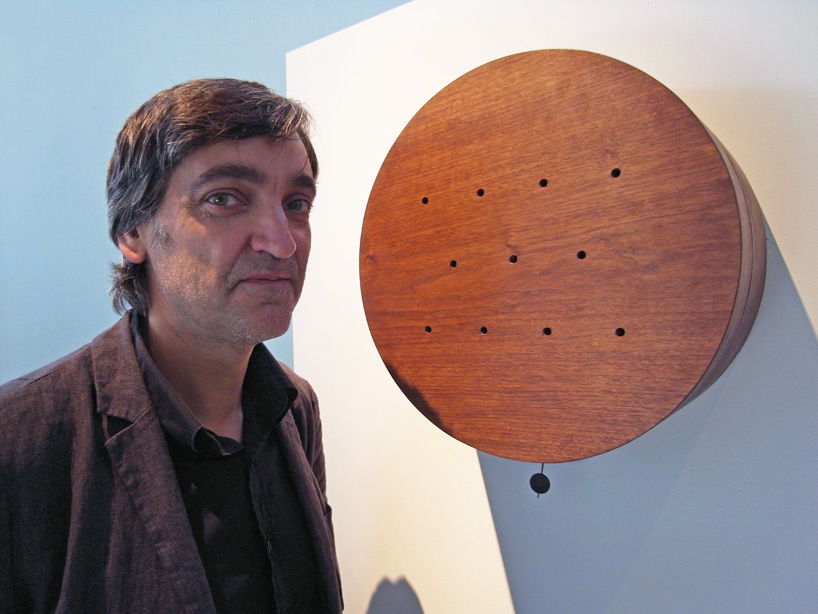
martí guixé with his wall clock ‘time to eat’
site specific, 2011
portrait © designboom
‘time to eat’ by catalan designer martí guixé is a wall clock telling you it is time to eat by emitting the smell of cooking:
9am breakfast, 1pm cooking vegetable smell, 10pm preparing tomato sauce…
– essence project lorenzo dante ferro
‘in the near future we will be all nourished with some kind of pills. this will happen, not because we are pleased about,
but because all our natural resources will be contaminated. it is in theory possible to live with such a functional diet, but the
body is still contrary to these radical changes, it needs generations to evolve to a new form and format. this will happen also,
but in a very far away future. in ‘time to eat’ wall clock eating times are evidenced by cooking smell. this smell still acting as
activator from our senses and our chemical substances related to memory and feelings. ‘time to eat’ is a kind of transition to
adapt our body to a radical change. next generations will not need time to eat anymore.’ – martí guixé
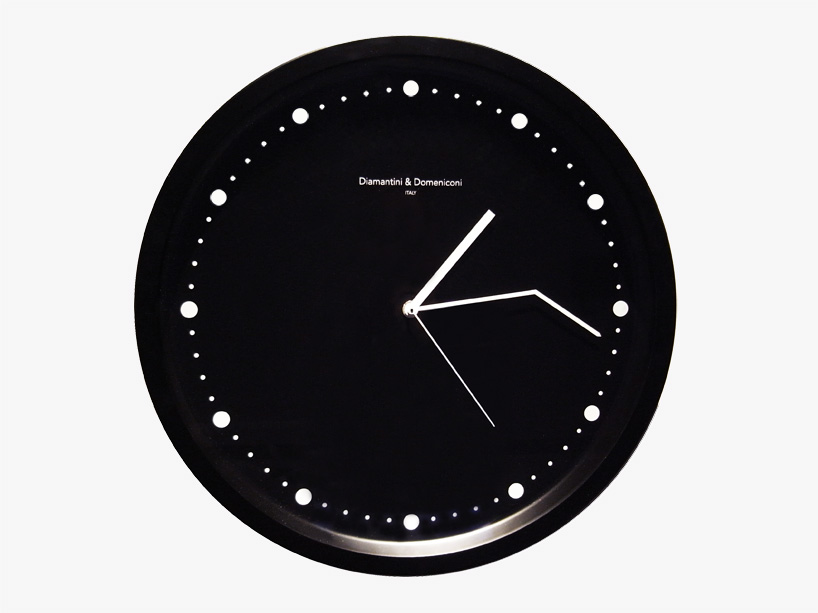
‘on time’ by diamantini & domeniconi for fabrica, 2009
image © designboom
‘on time’ by diamantini & domeniconi for fabrica features a bent minute hand which is angled to indicate an advanced time of five minutes.
ideal for chronic latecomers.
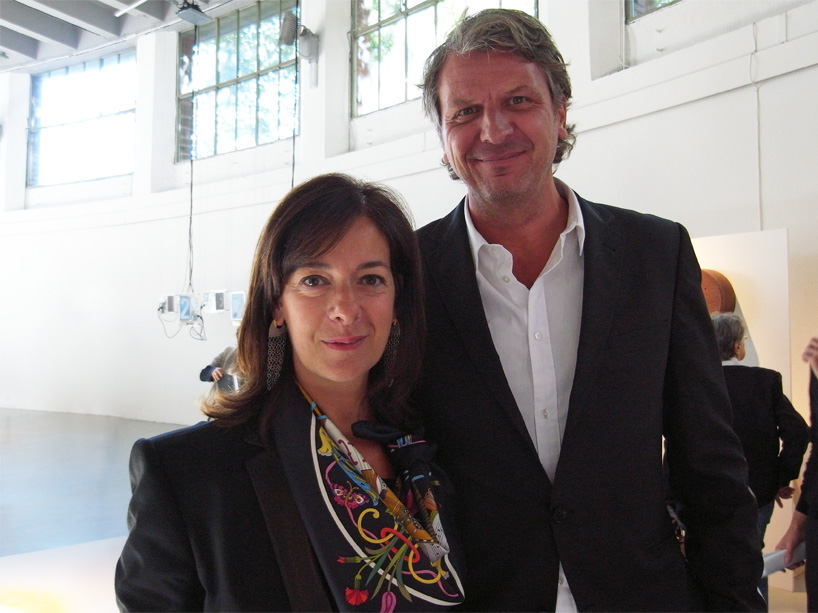
exhibition curators silvana annicchiarico and jan van rossem
image © designboom
MILAN TRIENNALE (37)
TIMEPIECE DESIGN (365)
PRODUCT LIBRARY
a diverse digital database that acts as a valuable guide in gaining insight and information about a product directly from the manufacturer, and serves as a rich reference point in developing a project or scheme.
